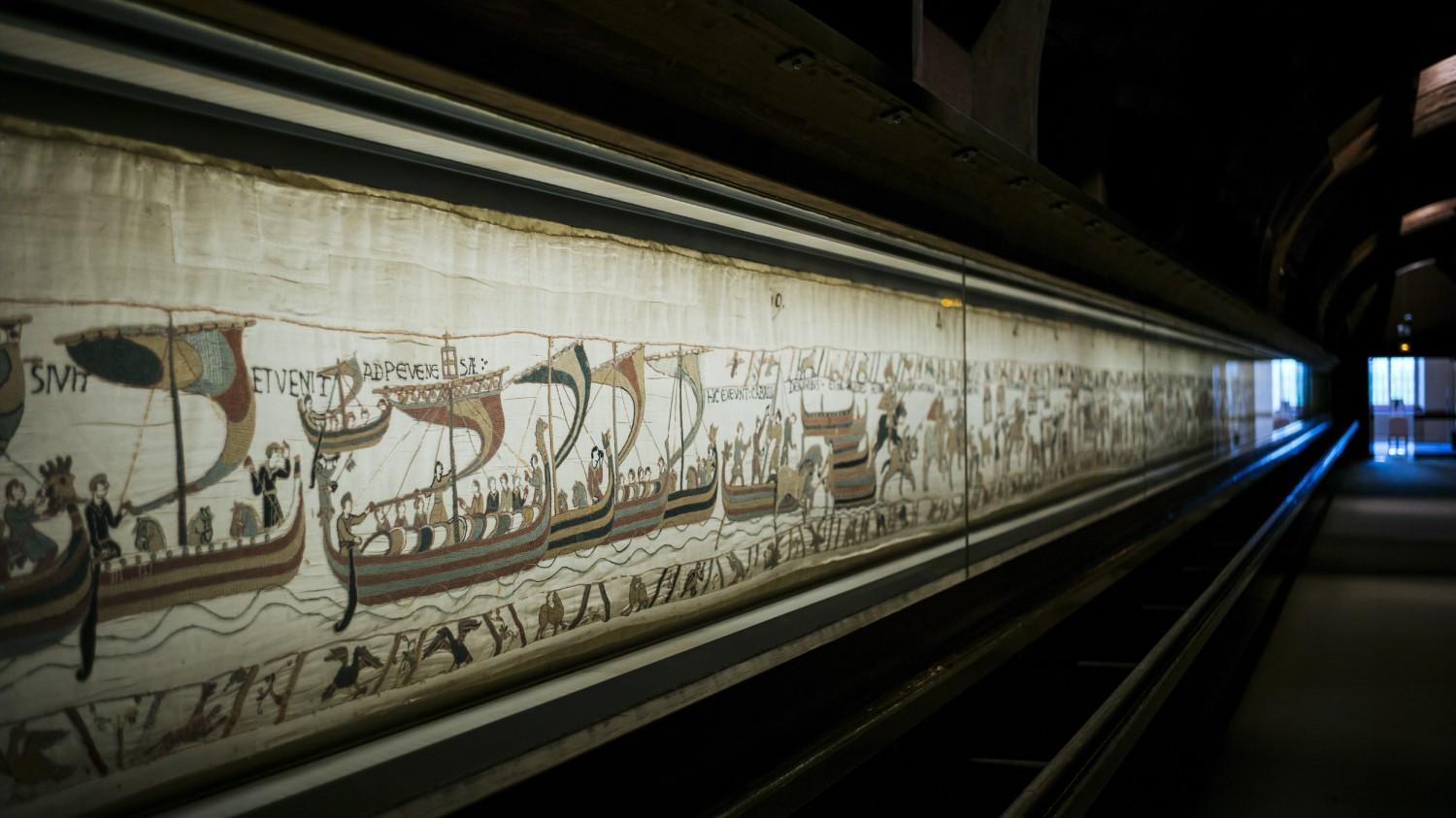
For centuries, the Bayeux Tapestry has captivated audiences with its vivid storytelling of Anglo-French history. The 70-meter embroidered cloth depicts the conquest of England by the French duke William in 1066, detailing sword-wielding knights, King Harold’s famous death from an arrow to the eye, and the complex web of vengeance, betrayal, and power struggles that shaped medieval Europe. Commissioned as propaganda for William, known as “the Conqueror,” the tapestry is considered a medieval precursor to modern comic strips.
Next year, the fragile masterpiece will travel from its home in the Bayeux Museum in Normandy to star in a blockbuster exhibition at London’s British Museum from September 2026 to July 2027. Its first U.K. appearance in nearly 1,000 years reflects warming cross-Channel ties following the U.K.’s Brexit-induced tensions. The loan was announced in July during French President Emmanuel Macron’s historic state visit to the U.K., the first by an EU leader since Britain’s departure from the EU.
Bayeux Museum curator Antoine Verney emphasized the tapestry’s symbolic return. Historians widely believe it was embroidered in England using woolen threads on linen canvas. William’s victory at Hastings is a defining moment in English history, deeply ingrained in the U.K.’s collective memory. “For the British, the date — the only date — that all of them know is 1066,” Verney said.
Transporting the work presents significant challenges. Made of nine linen panels stitched together, the embroidery depicts 626 characters, 37 buildings, 41 ships and 202 horses and mules across 58 scenes. Its age and fragility require meticulous planning. Believed to have been commissioned by Bishop Odo, William’s half-brother, around 1077, the tapestry remained mostly in Bayeux for seven centuries, surviving the French Revolution, fires, and other hazards. It has been exhibited outside Normandy only twice: in Paris’ Louvre from 1803 to 1804 under Napoleon and again in late 1944 following the Allied liberation of France during World War II.
During the tapestry’s U.K. exhibition, the Bayeux Museum will undergo a major renovation costing tens of millions of euros. It will close to visitors from Sept. 1 this year and reopen in October 2027, featuring a new building and an inclined 70-meter display table that will transform the viewing experience.